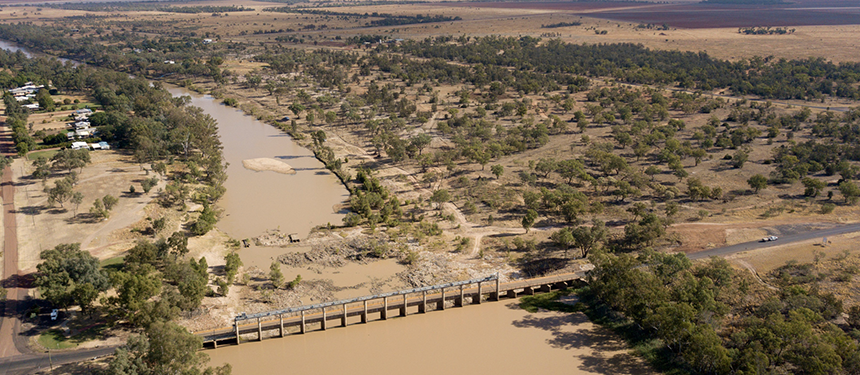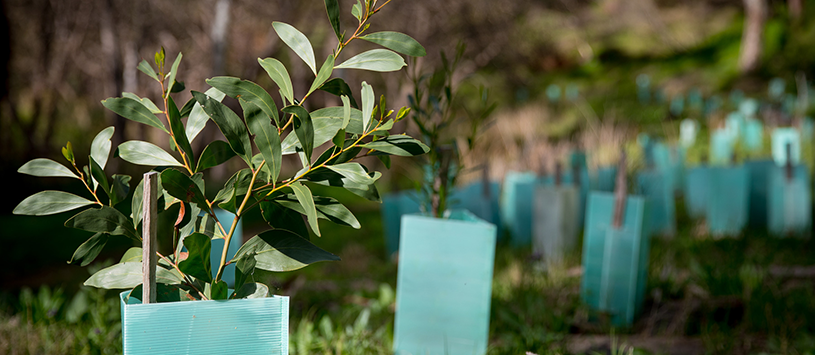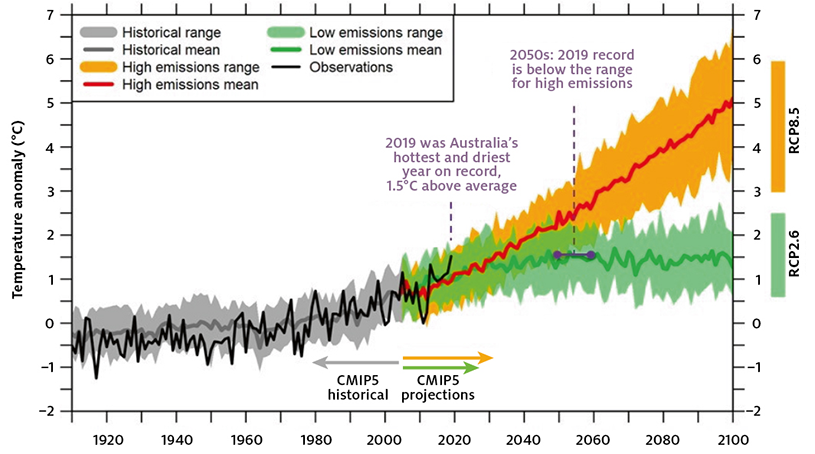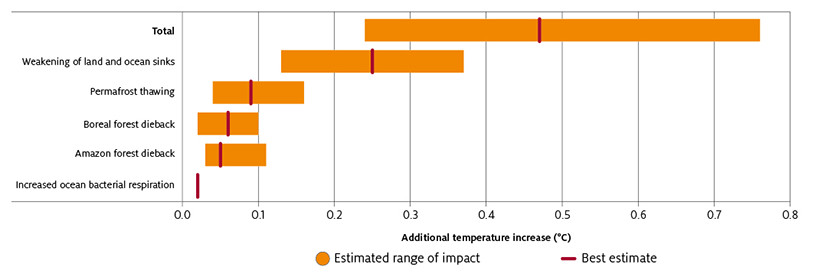
Source: Shutterstock.com
Accelerating changes in earth systems at all scales – from global to microbial – are creating multiple risks and challenges, and some opportunities.
Agriculture is already impacted, and adapting. Climate and commodity prices will become more volatile, while emerging markets for carbon and ecosystem services could transform landscapes and business models.
[expand all]
Science suggests major challenges ahead
Multiple lines of evidence suggest current patterns of resource use are resulting in multiple environmental pressures, that will have increasingly negative impacts human wellbeing if not addressed. These impacts are not inevitable, however, and action by government, business, and communities could decouple economic growth from environmental pressure, to reduce and repair environmental damage while boosting incomes and human wellbeing (IRP 2019).
Global greenhouse gas emissions continue to rise, despite large-scale shifts to renewable energy. In the absence of more ambitious global efforts and policies to reduce emissions, the world is on track for temperature increases this century of around 3°C above pre-industrial levels. Climate science suggests Australia will become hotter, and that southern areas are already experiencing a shift towards drier conditions with lower streamflow. Droughts, storms, fires and heatwaves will become more intense – and perhaps more frequent – creating significant challenges for agricultural producers and regional communities (CSIRO and BOM 2018).
ABARES research finds hotter and drier conditions since 2000 have reduced the profitability of broadacre farming by 22%, relative to estimated output under pre-2000 climate and seasonal conditions. Cropping farms are particularly effected, with profit down 35%, while livestock farms have been less effected. Adaptation efforts have reduced, but not eliminated, the impact of the observed shift in climate over the last two decades. Looking forward, ABARES modelling explores potential scenarios for irrigated agriculture in the Murray Darling Basin (Gupta et al. 2020) and is developing capability to assess potential future climate scenarios on different types of broadacre farms across Australia.
Notes: Australian mean annual surface temperature in the past and for future emissions pathways, relative to the 1961-1990 average. Observations are the Bureau of Meteorology ACORN-SAT version 2 dataset. Shading is the 10-90% percentile range of annual temperature anomalies from up to 37 CMIP5 models. Thick lines are the CMIP5 multi-model ensemble mean. Bars at the right of the plot show 10-90% range for temperature outcomes for the high and low emission scenarios for 2090. The CMIP5 projections do not account for the reinforcing feedbacks discussed in Section 4.2 below.
Source: Redrawn from CSIRO and BOM 2016, page 5, with historical data updated to 2019.
Interactions and feedbacks often amplify risks
Interactions across and within social, economic, and biophysical systems can amplify the impacts of individual trends. Rising pressures on natural ecosystems increases the risk of coronavirus and other zoonotic diseases infecting humans, while the rapid growth of international travel and connectivity accelerate and amplify the impacts of pandemics, such as COVID-19. Increased population and development in coastal areas puts more people at risk from severe storms and inundation. Growing resistance to herbicides, pesticides and antibiotics makes managing increasing biosecurity risks even more challenging. Trend increases in temperature increase the likelihood of longer and more intense bushfire seasons.
Current trends in global greenhouse gas emissions are bringing the world closer to climate thresholds which, if passed, would see reinforcing feedbacks accelerate the extent of climate change – including rising temperatures and sea level – regardless of reductions in emissions from industry, agriculture and land use change (Steffen et al. 2018). These feedbacks could add at least 0.24°C of warming by the end of the century, with a best estimate of an additional 0.47°C on top of projected warming as a direct result of emissions from human activities (shown in Figure 10 above). Accounting for reinforcing feedbacks strengthens arguments to make rapid reductions in global emissions, to accelerate efforts to create and enhance biological carbon sinks, and to aim for the more stringent end of the Paris temperature range – each of which would reduce the likelihood and extent of these additional increases in temperatures.

Reducing net emissions and protecting natural assets could benefit landholders
Consumers and regional communities will increasingly expect producers to value and protect natural assets – including maintaining healthy ecosystems, water quality, and avoiding loss of species and habitat – and will require action by business and consumers, as well as new government policies in some instances (see Consumer attitudes and expectations will continue to evolve and Social concerns will shape competitiveness). Many environmental services, like pollination or replenishment of fish stocks, can no longer be taken for granted – and are often becoming more commercially valuable due to both declining natural supply and increasing demand.
Improved environmental stewardship could offer substantial opportunities for land owners and regional communities, with some studies finding new markets for carbon and conservation payments could double landholder incomes over coming decades (see further reading below). The mix of outcomes achieved – including regional jobs and incomes, other economic benefits, biodiversity and ecosystem resilience, tonnes of carbon sequestered, and impacts on food production – will depend on the details of markets design and operations (see Figure 12), reinforcing the importance of engaging regional communities as early as possible.
These policies could also deliver national economic benefits, particularly in scenarios where other nations are willing to pay for the high-quality carbon credits Australia is able to supply. (Hatfield-Dodds, Adams et al. 2015).
Data source: Redrawn from Hatfield-Dodds, Adams et al. (2015) Figure 15, using data from Hatfield-Dodds, Schandl et al. (2015) data pack.

Resources and further reading
The World Bank (2012) explores how a 4°C world would involve “unprecedented heat waves, severe drought, and major floods in many regions” (executive summary). This world can be avoided, however, with rapid global action that could likely hold warming below 2°C. Chapter Six summarises impacts on agriculture and food production, particularly staple crops, including from higher temperatures, changes in rainfall, and increased CO2 fertilization. Combined impacts are on crop yields and food security are negative overall in most areas of the world where temperature increases are above 2-3°C, with more pronounced negative impacts in hotter regions, such as Australia and India. Campbell et al. (2007) explore implications of three climate scenarios for geopolitics and national security, providing some challenging food for thought (although aspects of the climate projections are now a little dated).
Two recent ABARES reports explore implications of climate variability for Australian agriculture. Hughes et al. (2019) assesses the impacts of observed hotter and drier conditions on broad acre farming over the last two decades, while Gupta et al. (2020) explores future scenarios for irrigated agriculture in the southern Murray-Darling Basin, including a potential drier future scenario.
CSIRO’s Australian National Outlook 2019 report (Deverell et al. 2019) finds payments to landholders for carbon and conservation services could more than double returns to landholders and see the share of land-based industries increase from 2.1% of the economy (without carbon and conservation markets) to 5.2% by 2060. Securing the benefits of such a shift would require policies that allow sale of carbon credits, development of support industries (such as plant nurseries, and carbon finance providers), and careful planning engagement to ensure arrangements deliver benefits to regional communities and natural systems as well as participating landholders.
References
Key implications for agriculture
- Maintaining access to premium consumers and markets will increasingly require approaches that combine profitable farming with protecting or improving environmental assets. Customers and other stakeholders will be increasingly unlikely to accept practices that risk environmental damage or poor animal welfare.
- Droughts, fires and floods are likely to become more disruptive and severe, and agricultural commodity prices and market access may become more volatile.
- Trends towards hotter and drier conditions will impact the profitability of agriculture, and will drive changes in farming practices and the location of some types of farming. Well-functioning water markets and governance arrangements will remain crucial for irrigated agriculture, regional communities, and other stakeholders.
- Climate and emissions reductions policies around the world are likely to become more stringent over time, increasing demand for land sector carbon credits from new plantings as well as for reducing greenhouse emissions from livestock and other agricultural activities (see Resources and further reading - Growth juggernaut: Three billion empowered consumers). Popular ideas of ‘agriculture’ and ‘farming’ will increasingly include forestry and markets for environmental services.



